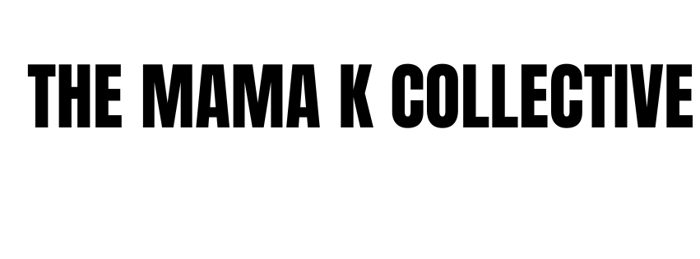Unlocking Sales Potential: The Power of Pinterest Visual Code
Discover how to unlock your sales potential with the Pinterest Visual Code. This blog dives into strategies to create eye-catching pins, boost Pinterest traffic, and drive real results. Learn how to design visuals that convert, craft descriptions that sell, and use goal-driven posting schedules to grow your business. Whether you're new to Pinterest or looking to refine your marketing strategy, these actionable tips will help you maximize your efforts and turn your pins into sales magnets. Ready to level up your Pinterest game? Start here!
1/18/20254 min read
Introduction to Pinterest Visual Code
Pinterest Visual Code represents a strategic framework designed to enhance marketing initiatives within the Pinterest platform. Its unique approach transcends basic guidelines, effectively transforming everyday pins into compelling sales instruments. As brands increasingly recognize the importance of visually-driven content, leveraging this structured methodology becomes critical for maximizing their marketing potential and driving sales growth.
The essence of Pinterest Visual Code lies in its focus on presenting engaging and visually appealing content tailored to the target audience. By following its principles, marketers can create pins that not only capture attention but also encourage user interaction and drive traffic to their websites. This structured approach assists in crafting messages that resonate with users while also highlighting products or services in a manner that feels organic and inviting.
Moreover, Pinterest Visual Code encourages businesses to optimize their pinning strategies, ensuring that their content stands out amidst a sea of visuals. This approach emphasizes the importance of aesthetics, composition, and storytelling—all fundamental elements that contribute to the effectiveness of a pin. By integrating these elements thoughtfully, brands can shift from merely posting images to creating an impactful visual narrative that enhances engagement rates and conversion potential.
Utilizing this code also presents an opportunity for businesses to differentiate themselves in a crowded digital marketplace. The excitement surrounding the implementation of Pinterest Visual Code comes from its transformative potential; not only can it elevate the quality of pins, but it also positions businesses to capture a larger audience and subsequently increase revenue. As we delve deeper into the specifics of this code, it will become evident how adopting its principles can drive organizational success within the Pinterest ecosystem.
Insider Strategies for High-Performing Pins
Creating high-performing pins on Pinterest requires a thoughtful approach that combines aesthetic design, compelling copy, and strategic keyword usage. Each of these elements plays a crucial role in capturing the attention of users and driving engagement. The design aesthetics of a pin should include visually appealing images and a clear layout that communicates the message effectively. Bright colors, bold typography, and high-quality photos can help draw users in, while maintaining visual hierarchy to highlight key information. For instance, using an eye-catching image along with overlay text can significantly enhance a pin's effectiveness.
Compelling copy is another vital component of a successful pin. The text should be concise yet powerful, piquing the interest of viewers instantly. Action-oriented language that encourages users to click through or save the pin can lead to higher engagement rates. Incorporating effective keywords within the copy can also enhance the pin's discoverability, as Pinterest's search algorithm favors content that utilizes relevant terms. For optimum results, integrating these keywords naturally into the text is essential; avoid overstuffing to maintain readability.
Utilizing various templates can streamline the creation process while ensuring different content types resonate with your target audience. For example, if you're in the food niche, recipes can be showcased with step-by-step images and ingredient lists formatted into easy-to-digest sections. Similarly, lifestyle brands may benefit from mood boards or curated collections that showcase products in use, allowing for a more relatable presentation. Consistency is key; ensure that all pins align with your brand's aesthetic and voice for maximum impact. This uniformity not only promotes brand recognition but strengthens your overall Pinterest strategy. By adopting these insider strategies and tailoring them to your niche, you can enhance the performance of your Pinterest presence significantly.
Leveraging Cross-Promotion with Threads
In today's digital landscape, cross-promotion has become a vital strategy for brands looking to maximize their visibility and engagement. This is where Pinterest and Threads can play a significant role in a cohesive social media strategy. By leveraging the strengths of these platforms, businesses can effectively amplify their content, thereby reaching a broader audience. Pinterest serves as a powerful visual discovery tool where users search for ideas and inspiration, while Threads provides a more conversational approach to community engagement.
One of the primary benefits of integrating these platforms is the ability to create a seamless journey for users. For instance, a compelling pin on Pinterest featuring an eye-catching image can direct users to a related post on Threads, prompting further discussion and interaction. Brands should craft their Pinterest posts with enticing visuals and clear calls to action that invite users to explore more on Threads. Utilizing hashtags effectively can also enhance discoverability, directing users from one platform to the other.
When developing content for cross-promotion, it is essential to maintain a consistent brand voice while tailoring the message for each platform. For Threads, consider posing open-ended questions or prompting discussions that complement the visual content seen on Pinterest. Engaging posts that encourage users to comment or share their experiences can foster community and drive traffic across channels.
Several brands have successfully implemented this strategy. For example, a fashion retailer showcased a stunning outfit on Pinterest, linking to a Threads discussion centered around styling tips and user-generated content. This not only increased engagement on both platforms but also resulted in measurable sales growth. By analyzing such case studies, brands can glean insights into best practices for cross-promotional efforts. These strategies underscore the potential of harnessing multiple social channels to create a more impactful marketing presence, thereby enhancing overall engagement and driving sales.
Crafting a Goal-Driven Posting Schedule
Establishing a structured posting schedule on Pinterest is crucial for businesses aiming to harness the platform's full potential. A goal-driven approach not only promotes organization but also ensures consistency in content delivery, which is vital for audience engagement. By effectively measuring results over time, businesses can refine their strategies and optimize performance on Pinterest. This systematic method aids in capturing and retaining audience interest, ultimately driving sales potential.
To create an ideal posting schedule aligned with business goals, users should first identify their target audience and the specific outcomes they wish to achieve. This could involve driving traffic to a website, increasing brand awareness, or promoting specific products. Once goals are defined, it becomes easier to tailor content types and posting frequency accordingly. Utilizing Pinterest analytics can aid in determining peak engagement times, enabling businesses to schedule posts for maximum visibility. Typically, evenings and weekends are high-traffic times when users are more likely to engage with pins.
Moreover, diversifying the types of content shared can keep the audience engaged. Incorporating a mix of infographics, how-to guides, and user-generated content allows brands to cater to various interests and drive interaction. Furthermore, businesses can leverage scheduling tools such as Tailwind or Buffer, which provide features for planning and publishing pins in advance. These platforms not only help streamline the posting process but also offer insights to monitor performance and engagement metrics.
By developing a well-structured posting schedule that reflects business objectives, companies can efficiently manage their Pinterest marketing efforts without feeling overwhelmed. This strategic approach is imperative to unlock the platform's vast sales potential while maintaining audience interest and fostering long-term engagement.


